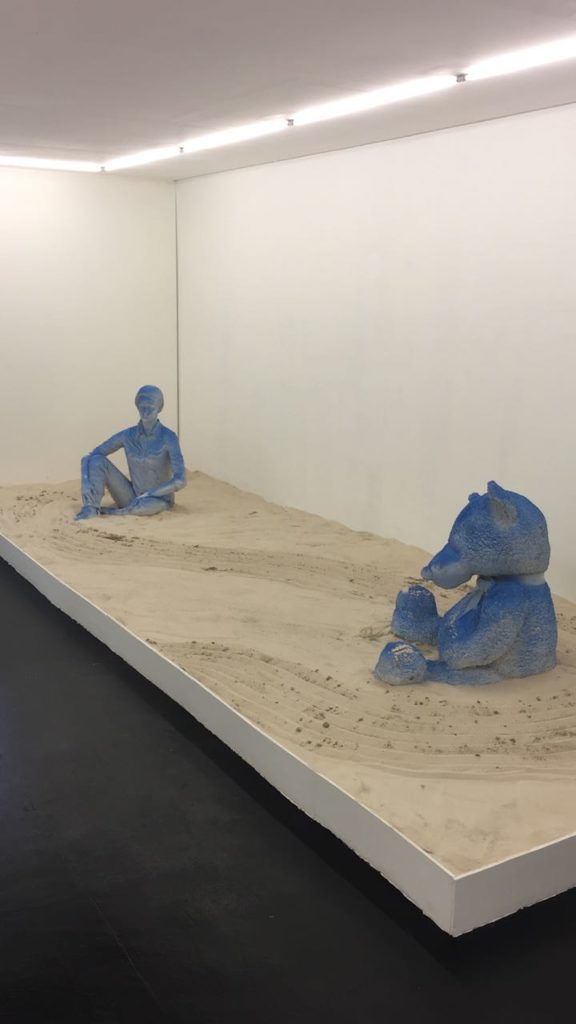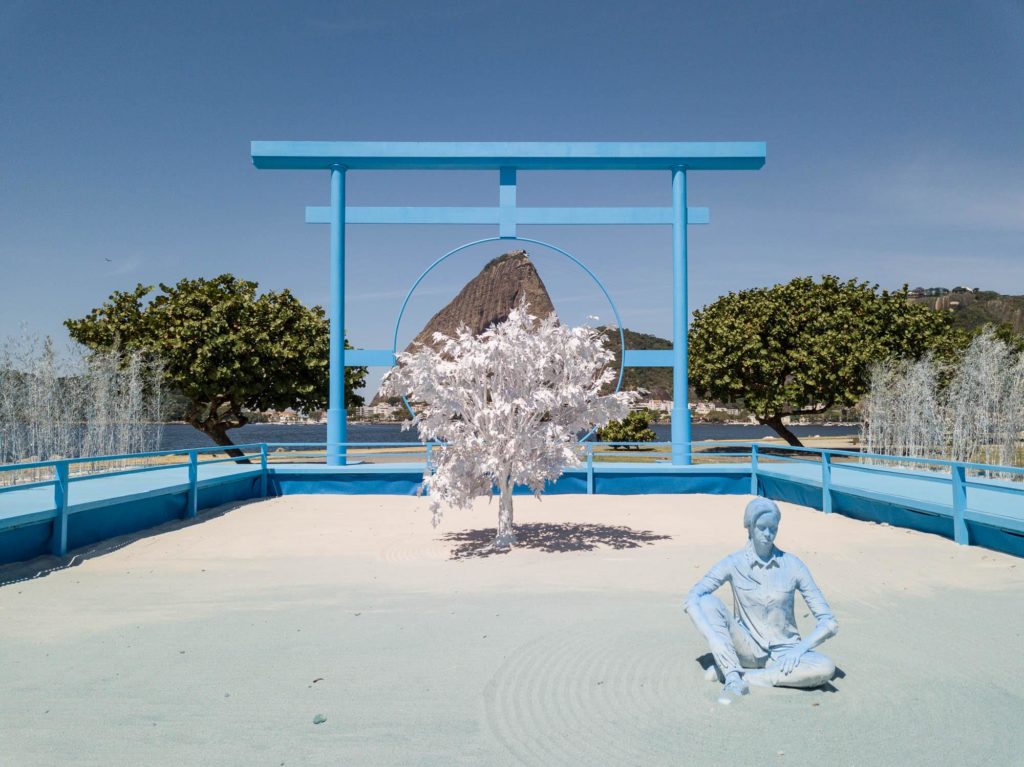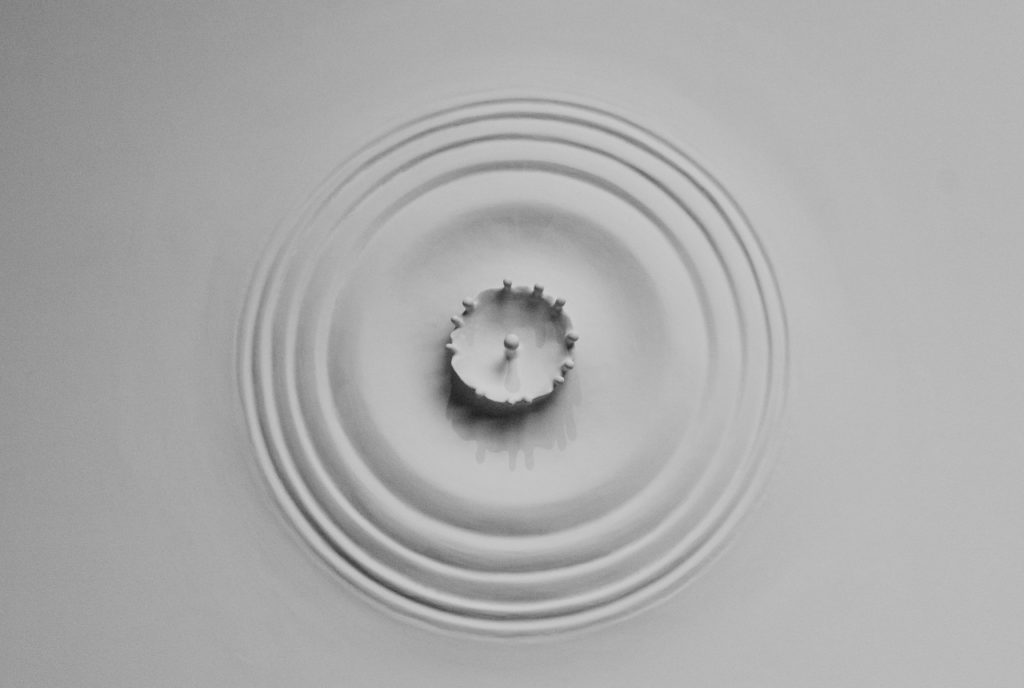Daniel Arsham Continues His Search for Zen With His Latest Show at Baró Galeria in São Paulo


Artnet Gallery Network

Much of Daniel Arsham’s work is meant to challenge our sense of physical space. But with his newest exhibition, “ZAZEN,” on view now at Baró Galeria in São Paulo, the New York-based artist seeks to channel a mode of being in which space is altogether nonexistent.
“ZAZEN” is named after the Buddhist state of mind in which temporal concerns such as time and space are suspended, allowing thought to flow freely through the brain and body.

Installation view of “ZAZEN,” (2018). Courtesy of Baró Galeria.
To facilitate this condition inside the gallery, Arsham has created a sandy Zen garden in which two recent concrete sculptures—a cross-legged woman titled Blue Gradient Seated Female Figure (2017), and a well-worn stuffed animal, Blue Gradient Teddy Bear (2017)—stand in for the kind of organic ornamentation that populate traditional gardens.
The garden is similar to the one he made outdoors in Rio de Janeiro last year. Ultimately, though, the exhibition isn’t about providing a space for individuals to achieve personal Zazen; it’s simply a collection of artworks that embody the tenets of Zen, and ask us to contemplate rules that dictate our universe: time, space, gravity, language.

Installation view of Arsham’s Blue Garden (2017), which was created for the 2017 edition of ArtRio.
In Arsham’s world, consumer objects that make up our everyday lives are as charged with energy as anything that appears in nature. Take, for instance, his two sculptural casts of another drooping stuffed-animal, each named after the materials used: Pink Selenite Dog and Volcanic ash, pirite, and selenite dog (both 2017).
From a distance, both works look like fluffy dog dolls, perhaps sourced from the bedroom of Arsham’s young son (something the artist has done before). But up close, you’ll notice selenite crystals poking through the skin of each animal, revealing an unexpected layer of archaeological wonders hidden beneath the surface.

Daniel Arsham, Pink Selenite Dog (2017). Courtesy of Baró Galeria.
Or look at two other works by the artist: the video Future Relic, which takes the form of trailer for a star-studded film set to be released in the summer of 2089, and a sculpture, Ash and Rose Quartz Eroded Televisions, which, as its title suggests, looks like a pair of television sets uncovered in a living room razed by volcanic eruption.
Both projects are part of the artist’s “Fictional Archaeology” series, in which he positions contemporary objects as historical artifacts of the distant past. He asks us to think about what life today will look like in 60 years or more, and to consider that time, like the objects we use to codify it, is man-made.

Daniel Arsham, Volcanic ash, pirite, and selenite dog (2017). Courtesy of Baró Galeria.
Finally, there’s Liquid wall (2015), a painted fiberglass and joint compound wall installation that references to Harold Edgerton’s 1936 photo, Milk Drop Coronet. It gives the impression that the gallery wall is, like the title suggests, liquid—subject to movement and perpetually on the verge of spilling over. Liquid wall embodies the central quality that underlies all of Arsham’s work: an everyday object imbued with the possibility of the impossible.

Daniel Arsham, Liquid wall (2015). Courtesy of Baró Galeria.
“ZAZEN” is on view at Baró Galeria through March 31, 2018.